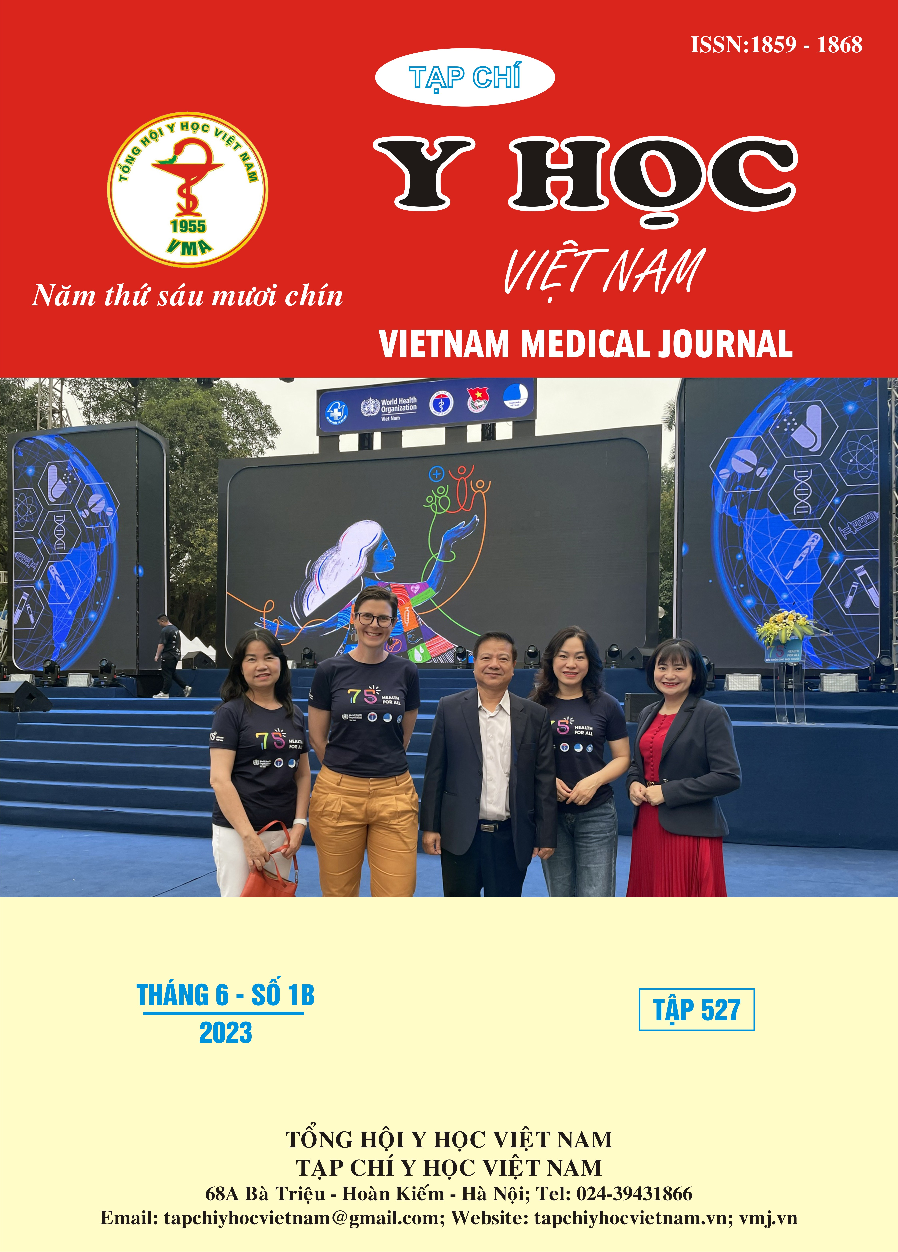EPIDEMIOLOGYCAL CHARACTERISTICS AND CLINICAL SYMPTOMS OF DEPRESSIVE DISORDER IN THAI BINH PROVINCE IN 2021-2022
Main Article Content
Abstract
Depression is a common mental disorder that carries the most significant disease burden, causing the leading cost of health care in the world. In Vietnam, the national program on community mental health care has been deployed across the country to detect, treat and manage mental disorders in the community, but it has not been entirely covered. The majority of mild and moderate depressive disorders in the community are not detected. Therefore, we carried out the topic: "Epidemiological characteristics and clinical symptoms of depressive disorder in Thai Binh province in 2021-2022". Objective: "Describe epidemiological characteristics and clinical symptoms of depressive disorders in Thai Binh province in 2021 - 2022". Research subjects and methods: A cross-sectional descriptive study of 16,645 subjects in Thai Binh province from February 2021 to November 2022. Results: Among 16,645 study subjects, 820 people were diagnosed with depression, accounting for 4.9%, in which the rate of depression in women compared to men is approximately 3:1. The rate of depression by age showed that the 50 to 60-year-old group had the highest rate of depression (12.1%), then the 41 to 50-year-old group (5.1%), the 18 to 30-year-old group had the lowest rate of depression(0.5%). Regarding the degree of depression, moderate depression accounted for the highest rate, followed by mild depression (47.4% and 44.6%), and major depression with psychosis (0.5%) accounted for the lowest rate. (0.5%). Clinical symptoms include main symptoms, common symptoms, and common somatic symptoms such as decreased energy, increased fatigue (88.7%), sleep disturbance (98.8%), diminished appetite (90%), decreased concentration and attention accounted for 74.9%, weight loss, decreased appetite (89.6%), loss/reduced interest and enjoyment compared to before (64, 6%). Conclusion: Common depression in the community is mild and moderate. Therefore, it is necessary to integrate mental health care programs in the community to access, propagate, screen, early detect, diagnose, and treat in time to improve the treatment and the quality of life for patients.
Article Details
Keywords
depression, epidemiology, clinical symptoms.
References
2. Rubenstein L., Unutzer J., Miranda J., et al (2000), Clinician guide to depression assessment and management in primary care, RAND, 11-12.
3. Phạm Tú Dương (2000), "Tìm hiểu đặc điểm dịch tễ và lâm sàng rối loạn trầm cảm tại phường Đông Khê – TP Hải Phòng.", Tạp Chí Học Việt Nam. 34, trang 245-246
4. S. B. Patten (2005), "Markov models of major depression for linking psychiatric epidemiology to clinical practice", Clin Pract Epidemiol Ment Health. 1(1), pages 2.
5. Đỗ Huy Hoàng (2021), "Thực trạng mắc rối loạn trầm cảm ở người trưởng thành tại xã Văn Lang huyện Hưng Hà tỉnh Thái Bình", Tạp chí Y học cộng đồng. 2354, trang 33-39.
6. Nguyễn Thu Hà (2021), “Đặc điểm lâm sàng triệu chứng ăn uống ở người bệnh giai đoạn trầm cảm điều trị nội trú tại Viện Sức khỏe Tâm thần”, Tạp chí Y học Việt Nam tập 507 – tháng 10 – số 2 năm 2021, 281-284.
7. Đỗ Tuyết Mai. Đặc Điểm Lâm Sàng Các Triệu Chứng Cơ Thể Của Giai Đoạn Trầm Cảm ở Bệnh Nhân Nội Trú Tại Viện Sức Khỏe Tâm Thần. Luận văn Thạc sỹ Y học; 2017.


